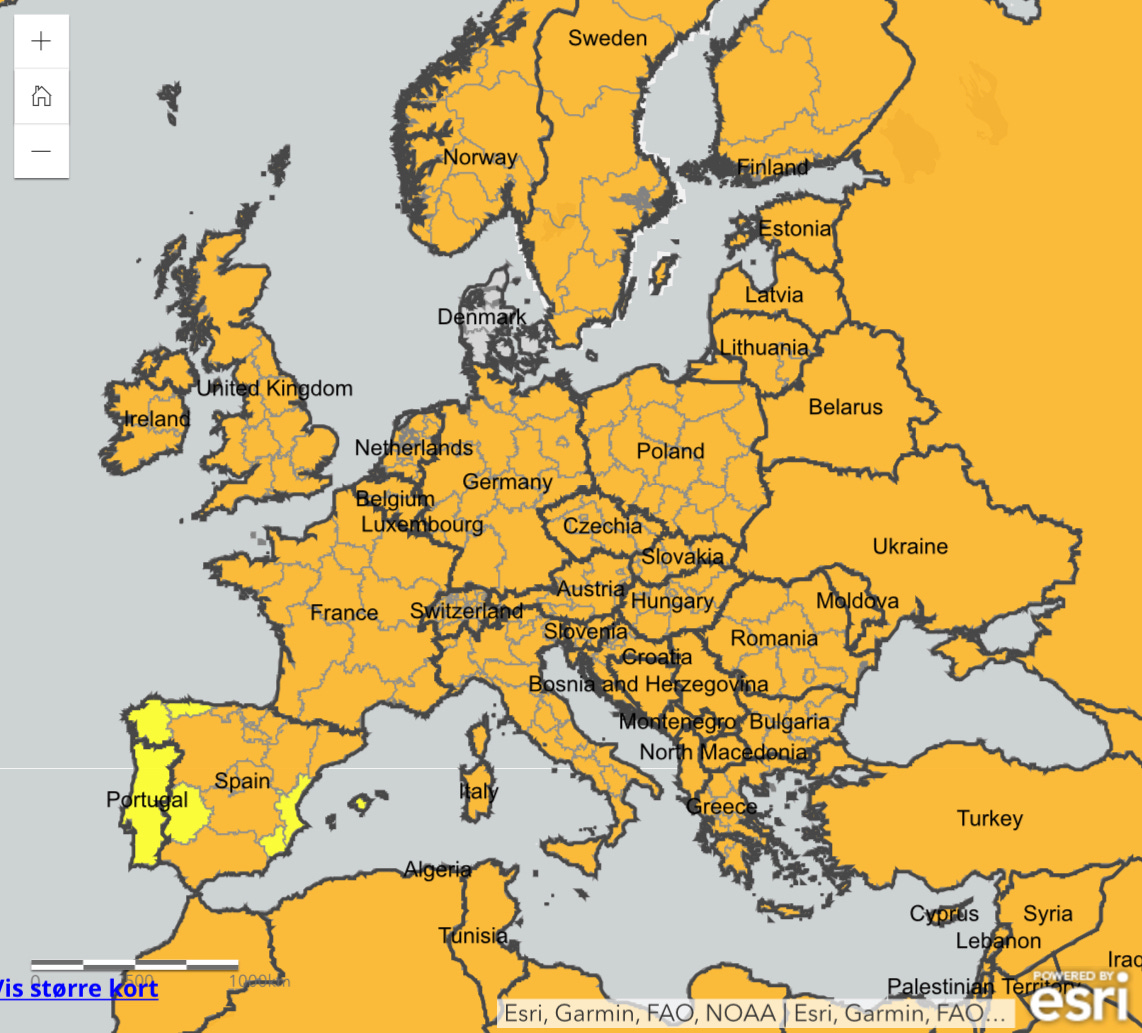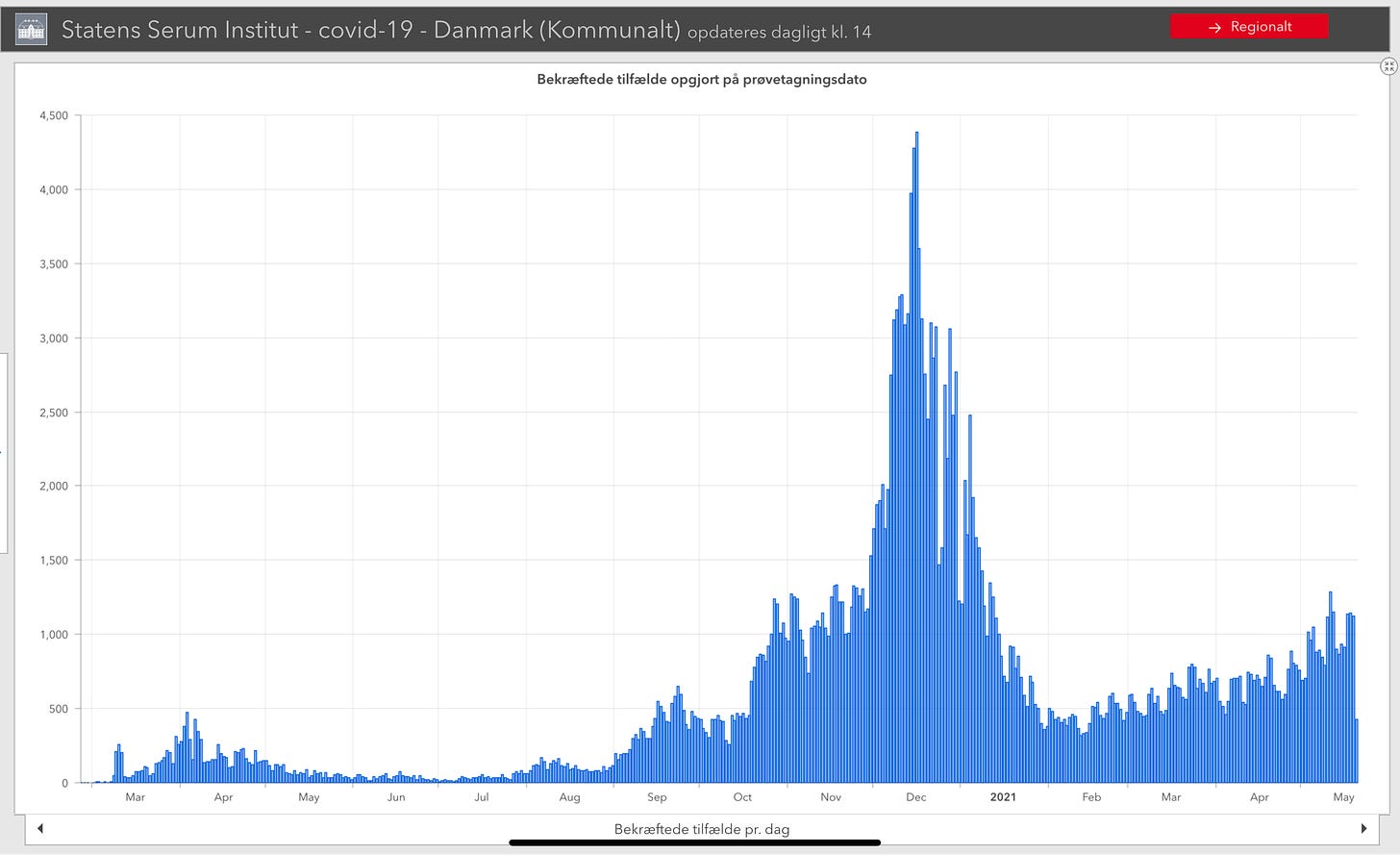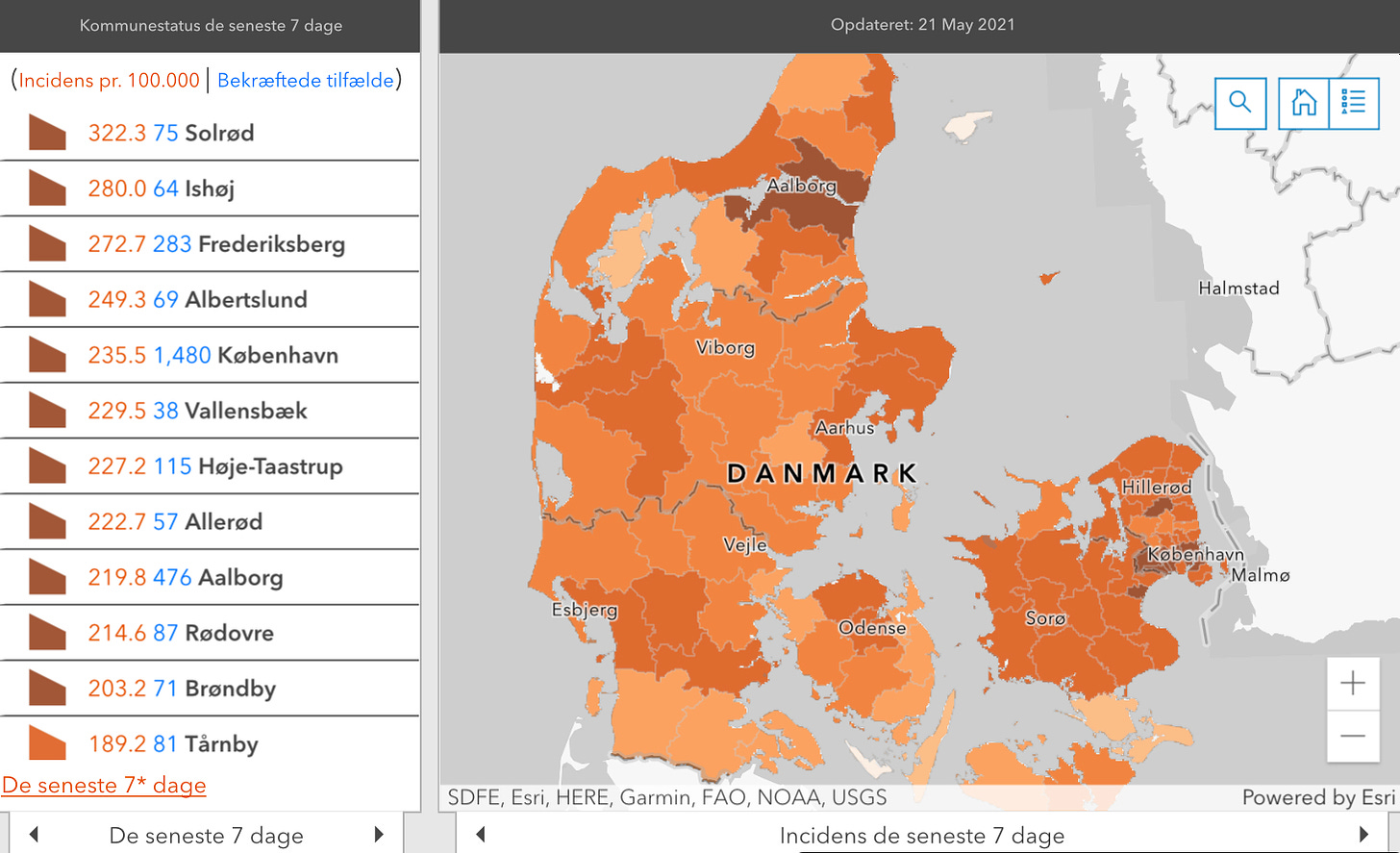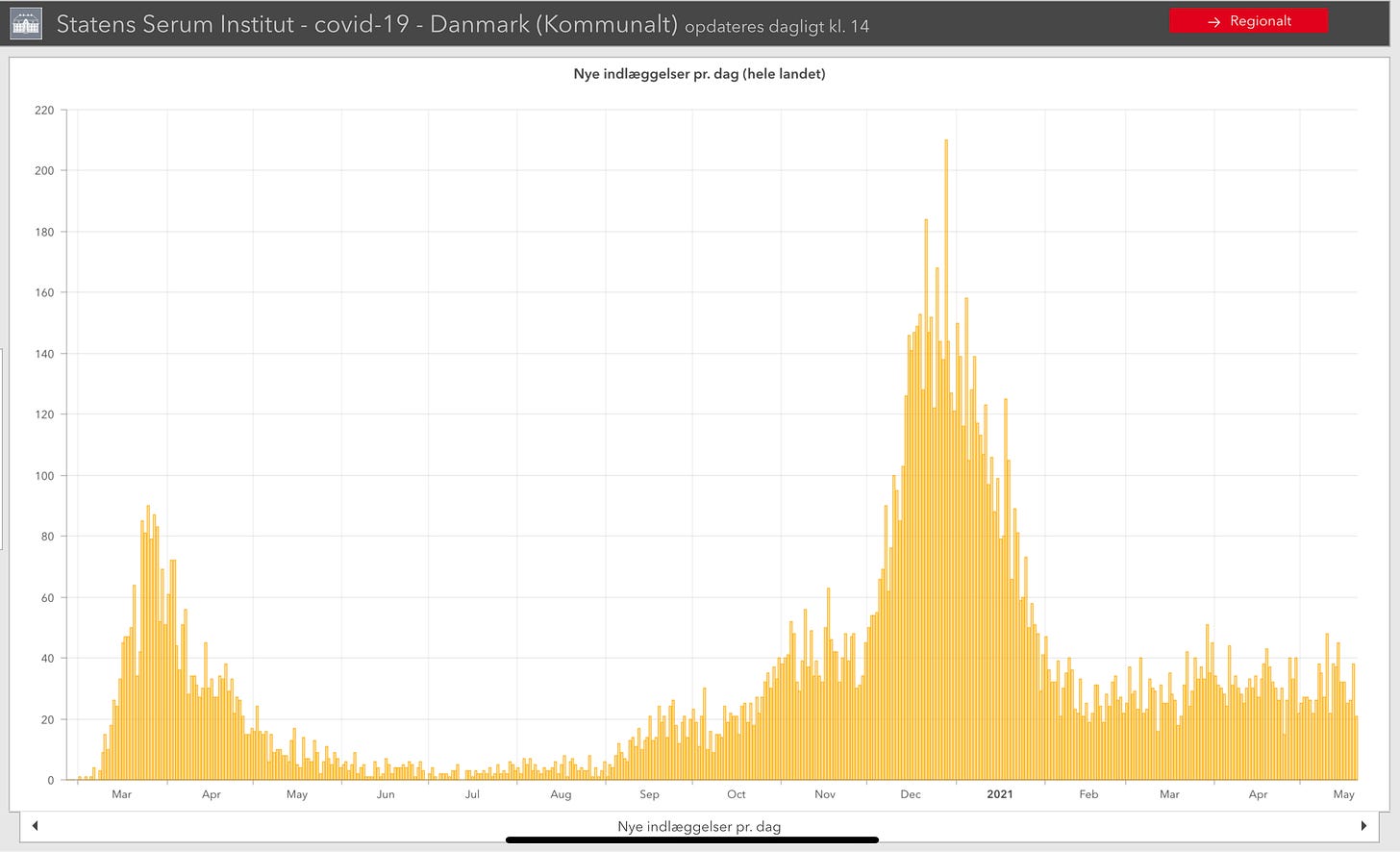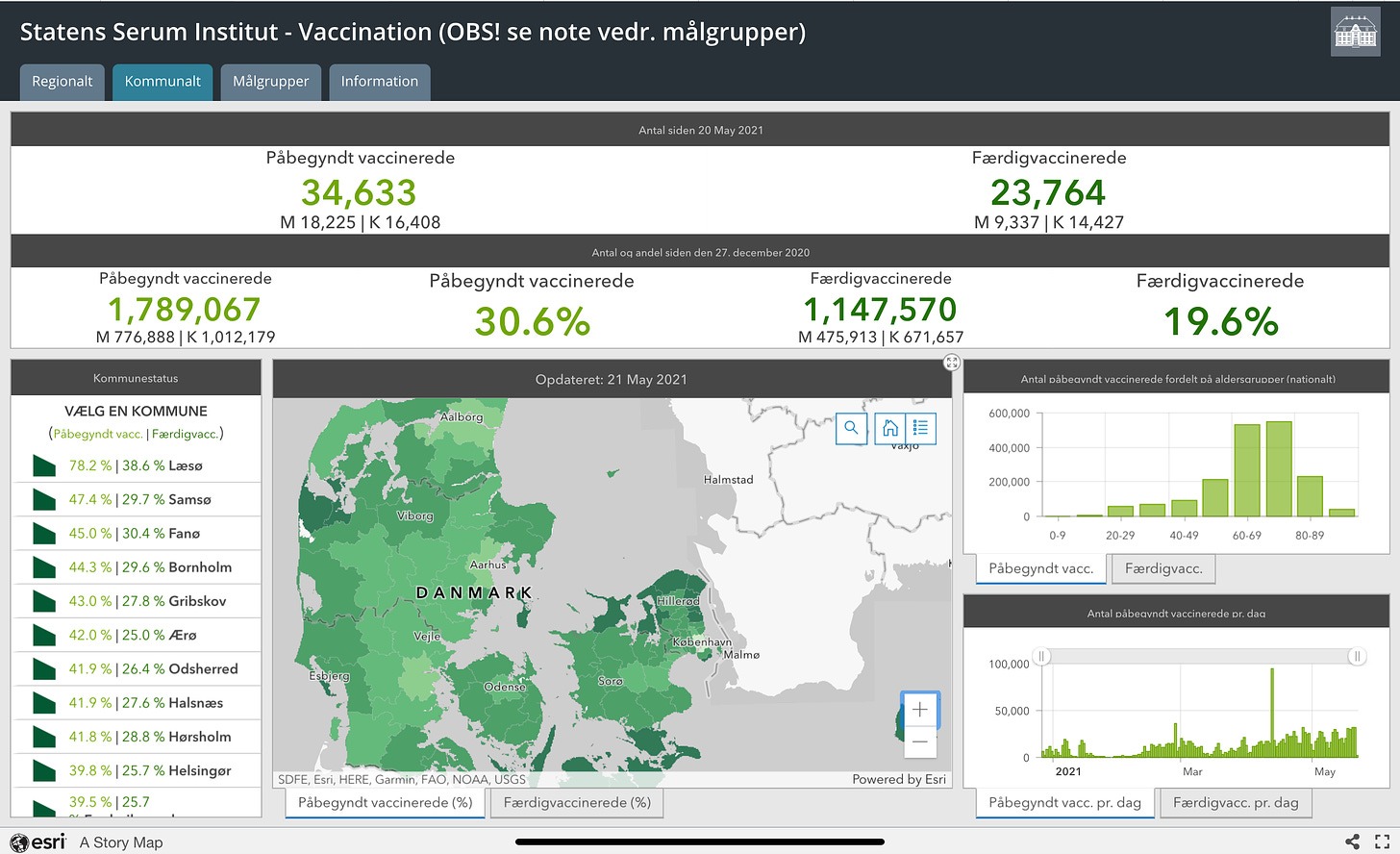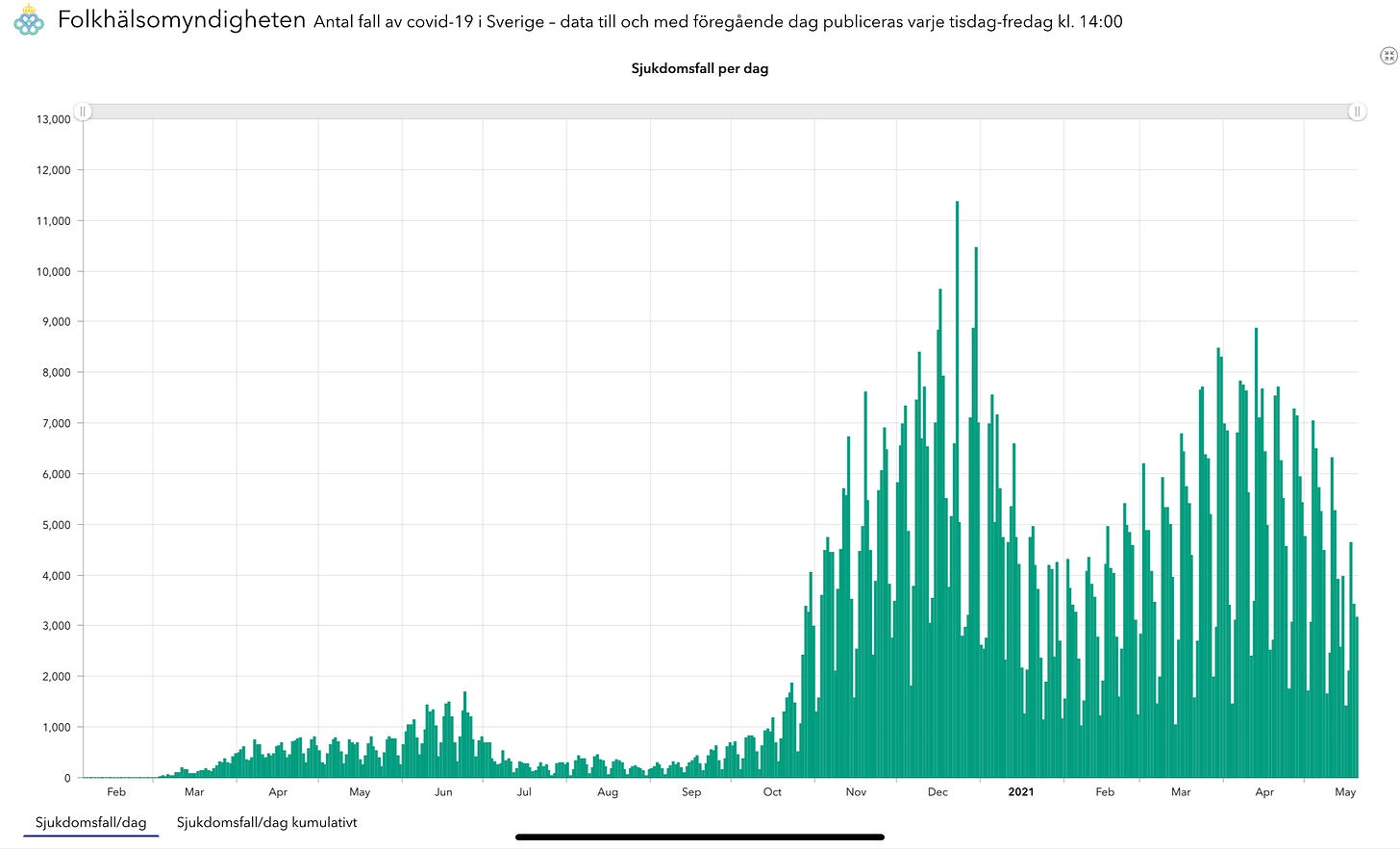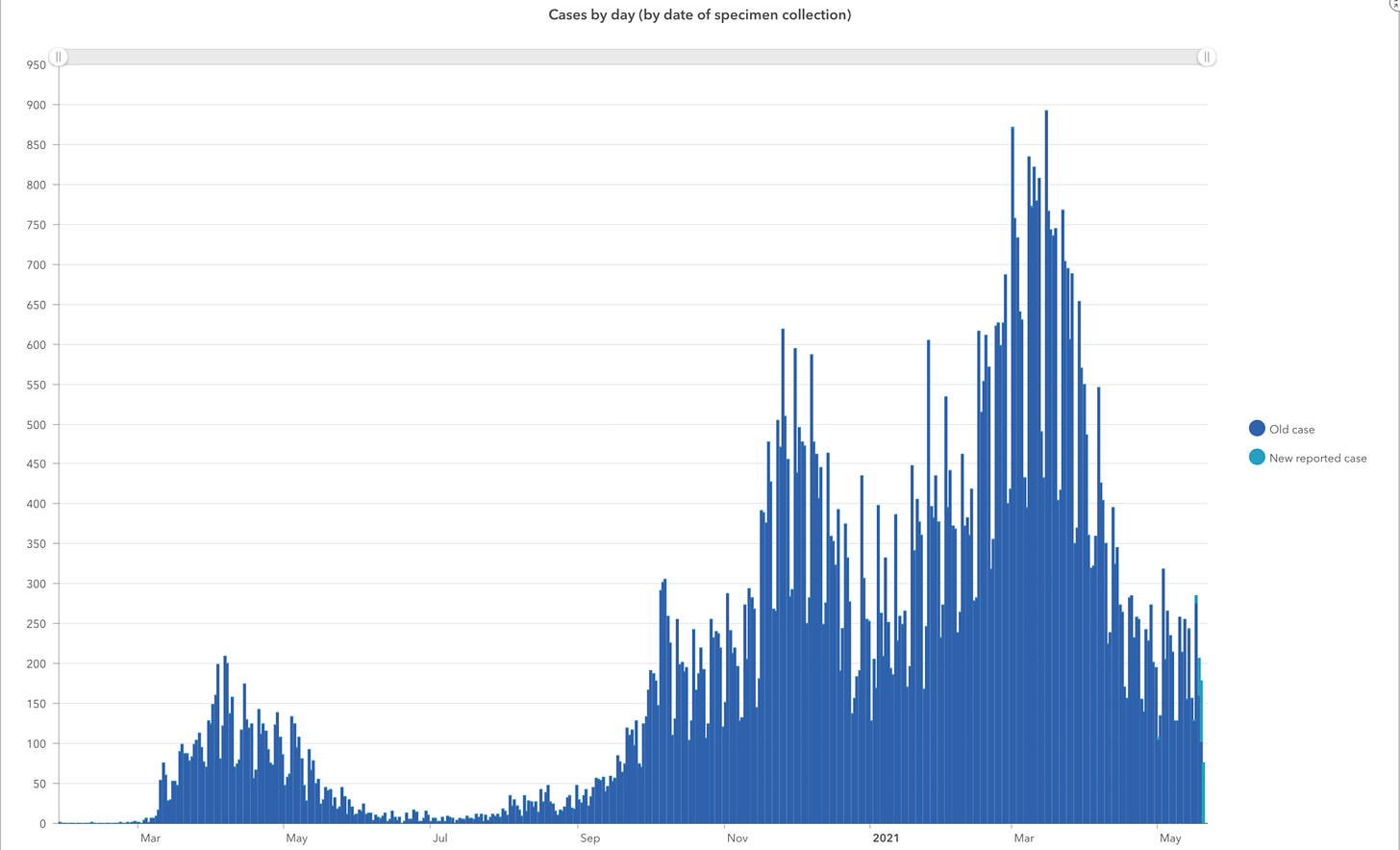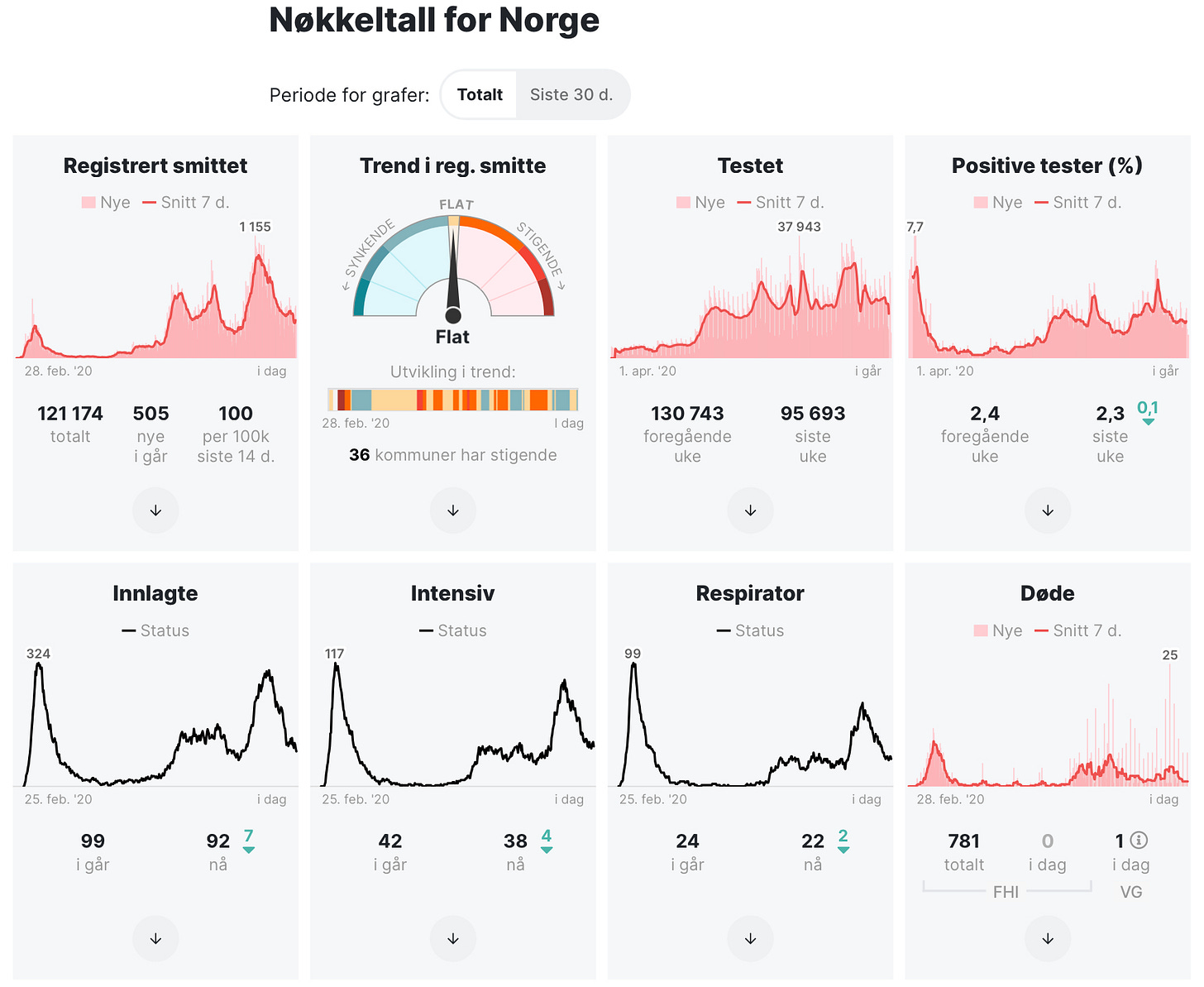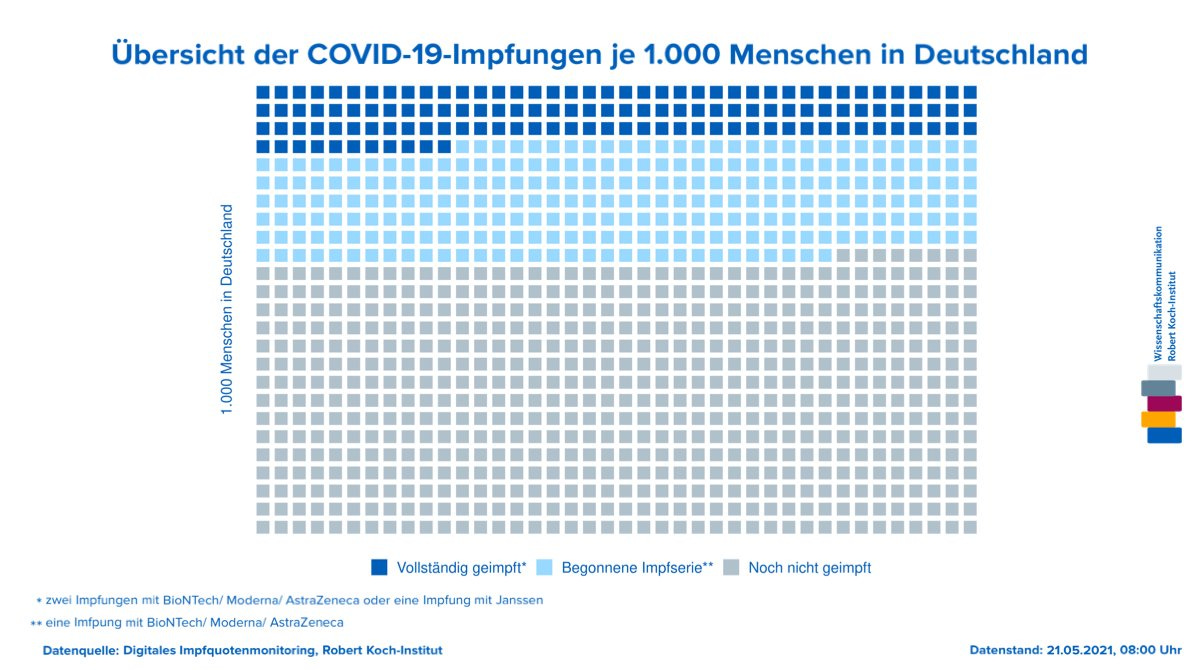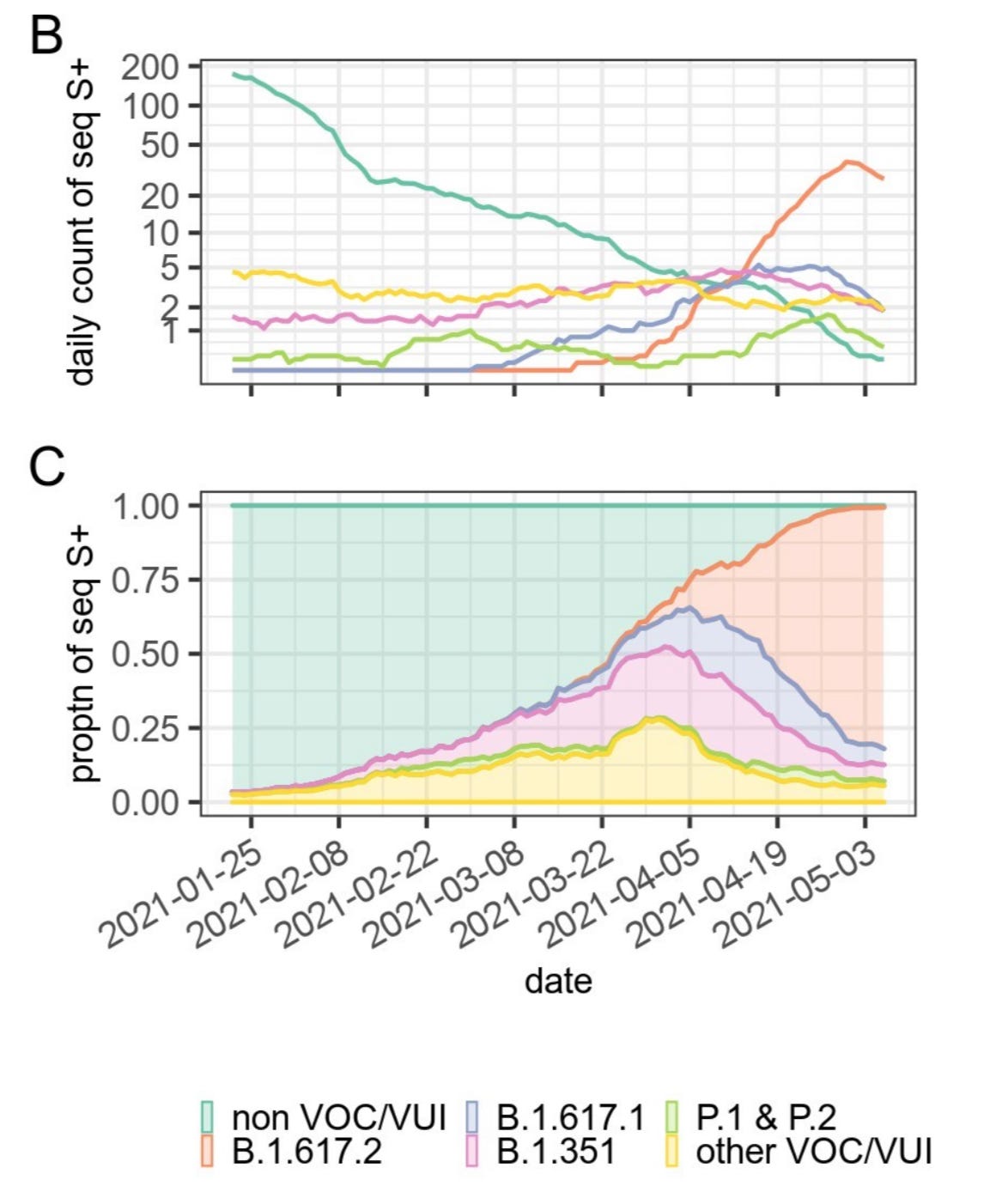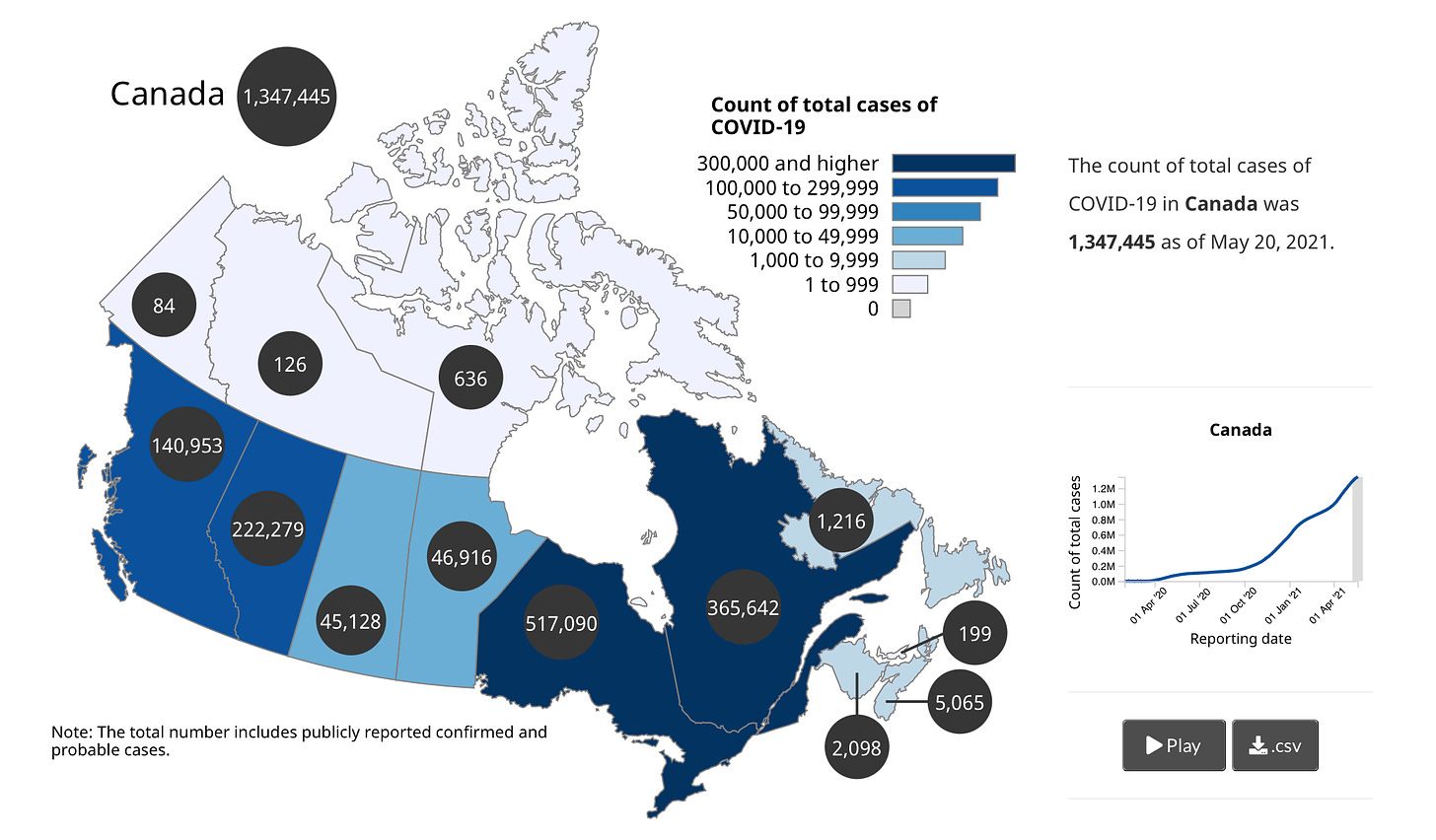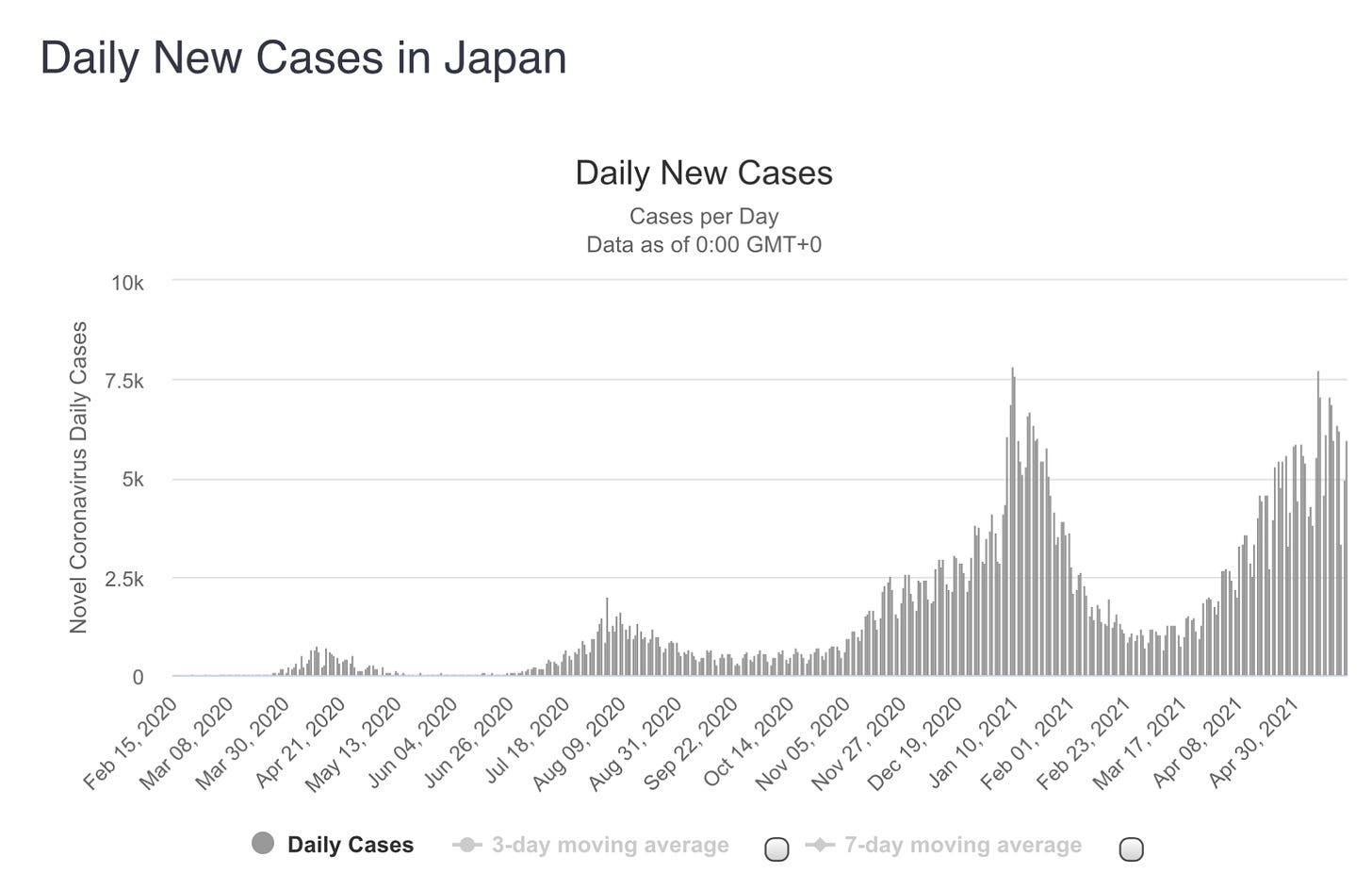The Evening Update - May 21st
Vaccinations in the optional system outside Denmark’s official program will begin soon
🇩🇰
Denmark’s Foreign Affairs ministry has revised the COVID risk level downward from orange to yellow for Romania and regions in several other countries. Most significant for people in Denmark, the Schleswig-Holstein in Germany is now yellow. Danish Foreign Affairs notes Germany allows trips of 24 hours or less with no special restrictions so day trips across the border can flow almost like normal. It is important to note Denmark still discourages against all unnecessary travel to the rest of Germany due to the COVID situation.
The other areas turning low risk level are Burgenland in Austria as well as Friuli-Venezia Giulia, Molise, and Sardinia in Italy. In Poland, the Podkarpackie region is also now yellow.
The areas above join Portugal and several regions of Spain which were downgraded to yellow last week. Travelers from counties and regions deemed yellow can fly to Denmark without the requirement for a corona test before boarding or having to isolate on arrival.
-
As of today, over 630,000 people in Denmark who have had a first vaccination dose but not yet a second have all the freedoms of someone who is fully vaccinated.
Denmark’s National Health Board says the two weeks after a first shot people will be able to use their vaccination status in the coronapas to go to school, eat in a restaurant etc. However, there is a time-limit on first shot freedoms. In order to ensure people get their second dose, Sundhedsstyrelsen has capped the ability to use a coronapas after one inoculation at 42 days after the first shot.
Minister of Health Magnus Heunicke:
“We know that the vaccines are extremely effective shortly after the first dose. Therefore, I am completely confident in this improvement of the coronapas. For the individual who has received their first vaccination shot, regular testing is therefore no longer required for their coronapas. It makes life a little easier when, for example, you go to a restaurant or to the cinema. It is also still absolutely crucial that you also get second dose because it provides extra protection against the virus.”
While the change comes into force today, the app itself won’t update until early next week. Until then, people with one dose can find documentation for their first vaccination in the app ‘MinLæge’ or on sundhed.dk’s website under the vaccination overview.
Also coming into force today is the reassessed timeline for immunity after having survived COVID. What was five months has been extended to eight. So for people who aren’t yet vaccinated but have had COVID they have a little bit more time to use their immunity on their coronapas.
-
A private provider has been chosen to begin administering the AstraZeneca and Johnson & Johnson vaccines outside the state vaccination system. A contract has been signed with Practio according to the Danish Health Ministry. The ministry says the company has informed them that doctor’s consultations can begin Saturday and the first vaccinations in Copenhagen will happen next week.
Danish Health Minister Magnus Heunicke says Practio will set up other vaccination sites around Denmark as soon as possible.
“Today, we have reached another milestone in terms of establishing the optional system for which there was broad political support. I am pleased that we are now in a place with all the formalities done so that the first vaccinations under the scheme can be given next week. Vaccination against COVID19 under the optional scheme is an individual choice, which every citizen is now free to make on an informed basis.”
Specifically, the scheme will work like this. The Staten Serum Institut will deliver AstraZeneca and Johnson & Johnson doses directly to Practio’s vaccination sites. People who want to be vaccinated under the optional system must contact Practio, book an appointment, have a doctor’s consultation, give their informed consent, and then they will get vaccinated.
The health ministry mandates Practio must operate their vaccination clinics a minimum of eight consecutive hours each day, seven days a week. The company must also immediately register each person who is vaccinated into the Danish Vaccination Register.
-
Denmark is reporting 1,351 COVID infections and no new coronavirus deaths in the last day.
Yesterday, there were 755,098 total corona tests done, 211,369 PCR and 543,729 rapid, for a (PCR only) positivity percentage of 0.64%.
The number of kommunes exceeding the coronavirus incidence rate of 200 infections per 100,000 residents has declined slightly to 11, with all but one being on Sjælland.
COVID hospitalizations (143) have dropped (-17) while the number of infected people in an ICU (31) edged down (-2) and, of those, the number on a ventilator (18) also declined (-4).
On the vaccination front to date, 1,789,067 1st dose vaccinations (30.6% of the population) have been administered while 1,147,570 people (19.6%) are now fully vaccinated.
The Staten Serum Institut say a significant vaccination milestone has now been reached with one in three people in Denmark having at least one vaccination dose.
Acting Head of Department Palle Valentiner-Branth stated:
“Vaccination plays a big role in our control of the epidemic, and it is good to see that the protection of the population is steadily increasing as we move towards a more reopened society. That we have now reached 30% vaccinated and will soon have full effect of the vaccine in every fifth Dane is a big thing.”
She notes new age groups are now on deck to begin the vaccination process.
“We know that age plays a role in the risk of a serious course with covid-19, and therefore it is good news that we are now getting started with the last target group over 50 years. The vaccination coverage among the 50-54-year-olds is now 1.8%, and it is expected that it will increase steadily, as we have seen in the other target groups.”
According to the SSI, 54.9% of those aged 60 to 64 years old have had at least one dose. Those aged 55 to 59 have about 17.7% coverage so far.
-
The 30% vaccination coverage is also reflective in Region Sjælland where 33.4% of people living in the area have had at least one dose. 20.9% of those in the health region are fully vaccinated.
The health authority says that, as of May 26th, everyone in the region 50 years old and older will have received an invitation to get vaccinated.
Region Sjælland says that everyone who wanted a vaccine in senior care homes has now been vaccinated. 1,000 people who are bedridden or who have serious mobility challenges have been inoculated in their own homes.
🇸🇪
Sweden has added 3,168 infections and another 15 coronavirus deaths since yesterday’s update.
To date, 3,437,129 1st dose (42% of the adult population) and 1,106,338 2nd vaccine doses (13.5%) have been administered.
-
The group representing Sweden’s municipalities and regions, Sveriges Kommuner och Regioner, has written the Swedish government requesting it ask neighbouring Nordic countries for COVID help. Specifically it is looking to ease pressure on the country’s strained intensive care wards.
The letter says the pandemic, particularly the last two infection waves, have presented “incomparable challenges” to the Swedish health care system. It adds the pandemic has resulted in ICU capacity being expanded “far beyond the normal level” with strains even greater than that during the spring. While the group acknowledges infections are easing, it says health staff are exhausted.
“All conceivable measures are now needed to enable the maintenance of Swedish intensive care capacity at the same time as the staff need to be given the opportunity to rest and recover.
The letter adds that only the federal government can make an official request for help to other countries.
“The support can be given by enabling qualified anesthesia and intensive care staff from each country to work temporarily in Sweden during the summer of 2021 by opening up for recruitment. This form of support would go beyond the support that can be obtained in a disaster situation through the Nordic co-operation agreement.”
You can read the letter, in Swedish, in full HERE.
🇫🇮
Finland has registered 211 infections and had three more corona deaths since yesterday’s update.
COVID hospitalizations (136) have inched up (+1). ICU numbers (28) are unchanged.
To date, 2,234,109 1st dose (40.1% of pop) and 352,470 2nd vaccine doses (6.3%) done.
🇳🇴
Norway has added 661 infections and had no new virus deaths since yesterday’s update.
COVID hospitalizations (92) are down (-7), ICU numbers (38) and ventilator numbers (22), are also down, (-4) and (-2), respectively.
To date, 29.66% of Norwegians have had one dose and 13.87% have had both.
-
The Norwegian Public Health Institute is now allowing schools in regions with very low infection levels to move to a ‘green level.’ Schools in Norway operate on a traffic light COVID risk system with red, yellow, and green pandemic threat levels.
As of May 27th, schools in regions with low infections levels can move to ‘green’ meaning school life essentially returns to normal. Students no longer need to remain in cohorts, children can mingle, and play together as normal.
Institute Pediatrician Margrethe Greve-Isdahl:
“There will still be a number of municipalities with higher infection pressure that need to maintain a yellow level in schools and kindergartens, and possibly a red level in outbreak situations. However, it is very good news that municipalities with a low level of infection now have the opportunity to go to the green level.”
Schools shifting to ‘green’ must maintain a good testing capacity, monitor infection activity, and have a plan in place to quickly switch to yellow, or red status if needed.
Schools must still keep students on good hygiene habits, maintain rigorous cleaning, and adult staff and teachers must observe social distancing and other infection control measures.
🇪🇺
The European Union Council has voted to support beginning negotiations for an international treaty to fight against pandemics. The E.U. is expecting the World Health Organization to “back the establishment of a process for a Framework Convention on Pandemic Preparedness and Response “ in its meeting which starts on May 24th. In essence, the E.U. wants to ensure it has a seat at the table in any such negotiations over a global treaty to deal with any future pandemics.
-
The European Union has pledged to get 1.3 billion vaccine doses to low and middle income countries before the year’s end.
Specifically, it will make available one-billion doses of Pfizer/BioNTech, 200-million doses of Johnson & Johnson, and 100-million from Moderna.
🇩🇪
Germany’s Health Minister Jens Spahn said today “the third wave has broken.” He says restrictions and vaccinations have helped wrestle the infection curve down. He is urging people to keep following the rules to help stop the spread of COVID and buy time to get people vaccinated.
Yesterday vaccinations in Germany broke through the 10-million mark for second doses administered. Out of every 1,000 people in Germany 261 have had one dose and 131 are fully vaccinated.
🇬🇧
A paper published today by the JUNIPER group (Joint Universities Pandemic and Epidemiological Research) and posted by Public Health England, waves more warning flags about the India variant. It says more information about the variant is needed but notes modeling suggests any new strain with increased transmissibility is “capable of generating a wave of infections bigger than previous waves.”
It says “incontrovertible evidence that B.1.617.2 is more transmissible may come too late.” The report recommends rapid containment and surge testing in hot spot areas like Bolton and Blackburn, Sefton, Liverpool, and the area around Bedford “is warranted.” It also suggests surge vaccinations, increased asymptomatic testing, contact tracing, and isolation in those areas to break the chains of infection. The report also states, “In the face of uncertain evidence the risk of over-reacting seems small compared to the potential benefit of delaying a third wave until more people are vaccinated.”
🇨🇦
Yesterday Canada reported 5,058 new infections and another 45 coronavirus deaths as its COVID curves continues to trend downward.
Today Ontario’s Health Minister Christine Elliott tweeted, “Ontario is reporting 1,890 cases of #COVID19 and over 37,100 tests completed. Locally, there are 469 new cases in Toronto, 468 in Peel, 165 in York Region, 111 in Hamilton and 107 in Durham. As of 8:00 p.m. yesterday, 7,735,148 doses of the COVID-19 vaccine have been administered. This includes 158,524 doses administered yesterday – a new record for doses administered in a single day!” There were also 27 more deaths.
Quebec reported 752 infections and one death.
In Atlantic Canada, Nova Scotia recorded 65 infections. New Brunswick had seven. Newfoundland and Labrador have four.
Manitoba set a new infections record with 603 yesterday. It has yet to report today.
There were 146 infections and no new deaths in Saskatchewan yesterday.
Alberta has recorded 908 new infections and six more deaths. As of yesterday there were 685 people in hospital and 185 in an ICU.
B.C. reported 357 infections and three more corona deaths yesterday. There are 331 people in hospital (-9) and 113 in an ICU (-5).
🇯🇵
Japan has approved the use of the Moderna and AstraZeneca vaccines as it tries to breath new life into its sluggish vaccination program. Today the Japanese government also extended a COVID state of emergency as it deals with a troubling infection surge with just nine weeks to go before the Tokyo Summer Olympics.
This comes as the Japanese government’s top coronavirus advisor, Shigeru Omi, called on the International Olympic Committee and local organizers to decide one way or another whether to go ahead with the games or not. He says he grew concerned after studying reports on potential impacts the games could have on Japan’s medical systems.




